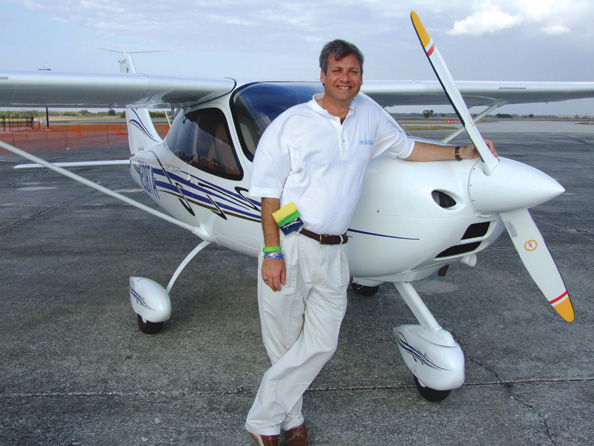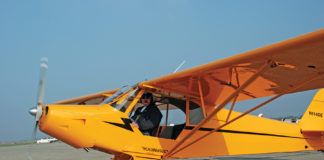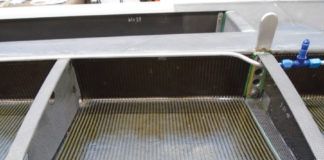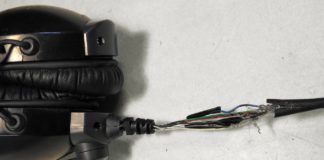
The Sebring Expo in Florida earlier this year provided a chance to review the latest Light Sport Aircraft from a European manufacturer that has been among the most active in the U.S. Light Sport market. The Tecnam Costruzioni Aeronautiche P2008 joins four other FAA-approved, ASTM-compliant Special (factory-built) Light Sport Aircraft marketed by Tecnam North America. The company’s Tecnam Sierra low-wing design (reviewed here in February 2007) was the sixth SLSA out of 107 currently on the FAA-approved SLSA list. Later that year I wrote about the high-wing Tecnam Bravo.
In the Beginning
In 1948, newly licensed Italian pilot Luigi Pascale, 26, designed and built his first airplane after a childhood and youth spent building flying models. For more than 60 years, what is now Tecnam has manufactured parts for other aircraft companies, in addition to its own line of sheet-metal two-seat airplanes. Several of Tecnams airplanes were in a good position to participate without major airframe modification in the FAAs SLSA category that became effective in early 2004.
The New LSA
With the P2008, Tecnam departs its all-metal airframe tradition. On this model, metal wings and horizontal tail (the standard Tecnam stabilator configuration) are joined by a curvy carbon-fiber fuselage and vertical tail that seem to capitalize on the Italian designers eye for combining beauty and function.
Visually, the effect is stunning. The practical result is a cockpit that appears larger on the inside than it does outside. An empty weight of 780 pounds leaves useful load to accommodate two 190-pound adults, some baggage and full fuel (a total of 24 gallons in two wing tanks). Thats enough for 690 nautical miles at max-range airspeed.
The cabin width is 45 inches, and the seats move fore and aft. Ground steering is same-price optional: either dual differential toe brakes and a swiveling nosegear or a direct nosewheel linkage. I prefer the swiveling nosewheel because its comfortable, turns almost in place, and is easier to maintain. There is a parking brake. Flaps are electric.
Power is no surprise: a four-stroke, 100-horsepower Rotax 912S that swings an MT two-blade propeller, or at extra cost, a Sensenich ground-adjustable two-blade prop. As always, the 912S comes with dual altitude-compensating carburetors, the external oil tank required for this dry-sump system, a liquid system with a radiator that keeps cylinder heads cool and, as in a car engine, allows tight piston/cylinder clearances that maximize efficiency and reduce oil consumption to close to zero.
Factory-recommended engine TBO has recently been increased to 2000 hours. Many Rotax engines go well beyond that figure. Preferred fuel is 92-octane auto gasoline. Rotax announced recently that E10 car gas (10% ethanol) is not a problem for the engine, though power is reduced slightly. But some aircraft fuel systems-those with natural rubber seals, for example-do not tolerate ethanol. Tecnam says its fuel system does not preclude the use of blended gasoline/ethanol fuel. Avoid it if you can, but its better than 100LL avgas.
The preferred P2008 accessory package runs the price to $169,999 and includes almost everything any pilot could want. The list includes wheelpants, dual Advanced Flight Systems EFIS and engine monitor flat-panel screens, Garmin SL40 com, GTX 327 transponder, XM Satellite Radio capable of near-real-time weather, a backup GPS, 406 MHz ELT, a Trio Avionics Pro Pilot two-axis autopilot, PS Engineering PM 3000 intercom, a night lighting package and an external alternator to move the extra electrons.
Some pilots may want an airplane cover if the Tecnam must be left outside, and there is also a ballistic chute system for an extra $7500.
Tecnam North America
Most of Tecnams production of more than 3000 aircraft over the decades has been for the European light aircraft market, but about 200 of the four previously approved SLSAs are flying in the U.S., where they are distributed and supported by Tecnam North America (TNA), headquartered in Virginia. The company recently announced an association with West Coast Sport Aircraft in Watsonville, California, for distribution and support.
Tecnam North America is an outgrowth of Heart of Virginia Aviation (HOVA), an FBO established by Tommy and Kimberly Grimes in 1992. Beginning as a small family business at a small airport, HOVA now employs 45 people at Hanover County Airport near Richmond. The company has recently purchased an FBO at Chesterton County Airport, also near Richmond. Tommy, an 8000-hour commercial pilot with A&P and AI ratings, serves as president of TNA, and Kim remains as vice president of human resources and office manager.
Tecnam North America CEO/CFO Phil Solomon comes from Great Britain and joined Heart of Virginia Aviation full time in 2005. He is a 1700-hour commercial pilot with numerous European and American business credentials in the areas of finance and marketing.
Dave Lubore, who introduced me to the P2008, is a former military pilot (he flew F-4s) and airline first officer and captain on Boeings and Airbuses. He is vice president of flight training services at HOVA/TNA.

The truly composite Tecnam combines a traditional metal wing and stabilator with a carbon-fiber fuselage and vertical fin.
Lets Fly!
After the usual walk-around, Lubore and I mounted up. Because the P2008 had flown earlier in the day, we could skip the famous ignition-off prop-twisting Rotax 912 drill that pressurizes the crankcase to check oil quantity in the external oil tank. Master switch on and a car-style twist of the key get the geared engine online immediately.
A brief taxi from the apron toward Runway 36 at Sebring confirmed that the toe brake/castering nosewheel steering works as well on the P2008 as on other SLAs of this and other brands. Residual engine heat from the previous flight precluded the usual minutes-long warmup to get oil up to the 122 F Rotax minimum for engine runup and takeoff.
Fifteen degrees of flaps for takeoff had us airborne in a bit of headwind in well under 500 feet of roll, and the climb rate at Vy (best-rate airspeed) was 900 fpm at something warmer than standard conditions but at lighter than full gross weight. From the outset, good handling and a nice balance between controls were apparent.
Because SLSAs must conform to FAA-approved ASTM standards for everything from design and testing to flight characteristics, variations of these parameters are small, especially when compared with Experimental/Amateur-Built aircraft, where there are no FAA-mandated standards. An example is that SLSAs must be pitch stable. The P2008 displayed its stability by returning in one lazy cycle to its trimmed airspeed and attitude after I disturbed it in pitch and let go of the stick.
Pitch trim is a three-position switch (forward, off and aft trim) on each stick, but there is another switch to determine which stick has trim control authority.
I note roll rate by quickly rolling (close to full aileron deflection and rudder as required) from 45 in one direction to the other 45 bank. Both ways, the P2008 accomplished this in about 2.5 seconds, which is typical of most SLSAs. Visibility from the cockpit is good, and the seats are excellent.
Maximum speed at full power near sea level was 114 knots indicated (120 knots is the LSA maximum level speed at full power). Both approach (clean and with flaps) and departure stalls provided warning and did not result in significant wing drop. The approach and landing were comfortable, and my first-attempt touchdown was free of embarrassment. I like the airplane.
Another New Tecnam
Also at the Sebring event was the first imported P2006T twin, powered by a pair of (what else?) Rotax 912S engines. A few details such as speed, more than two seats, gross weight, twin power and retractable gear kick this Tecnam out of the LSA nest, so I didn’t have the nerve to ask for a flight.
For more information, call 877/359-4682 or visit www.tecnam.net.

![]()
Dave Martin served as editor of this magazine for 17 years and began aviation journalism evaluating ultralights in the early 80s. A former CFI (airplanes, gliders, instruments), hes flown more than 160 aircraft types plus 60 ultralights (including a single-seat, no-basket hot air balloon). Now living at a residential airpark in Oregon, he flies his new Vans Aircraft RV-12.




